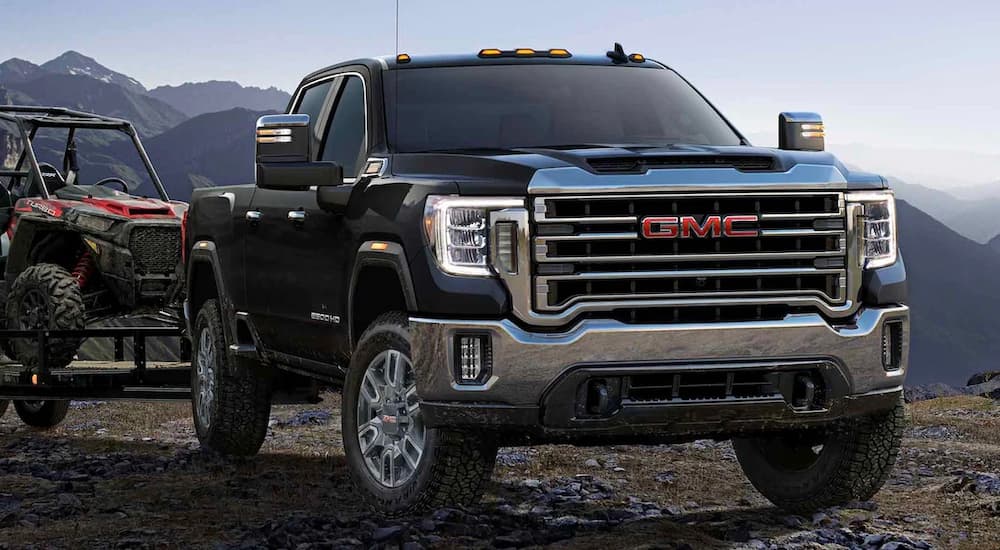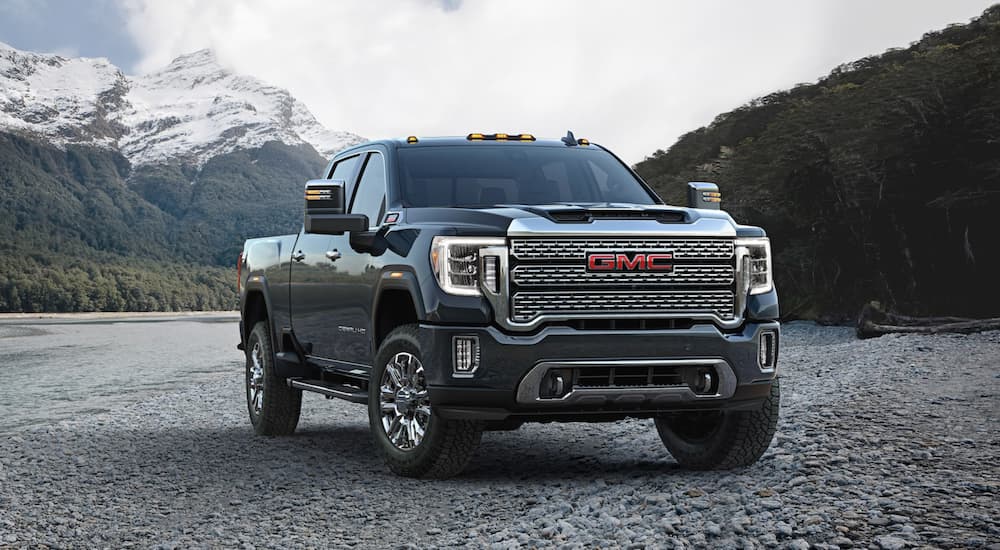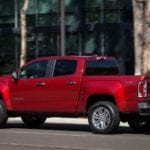If you’re shopping for a highly capable pickup truck, you probably come across plenty of terms like extended cab, HD, trailer hitch, and more. One such term you’ll come across a lot is trucks coming in various “tons.” In non-commercial trucks, this will either be a 1/2-ton, 3/4-ton, or 1-ton truck. If you’ve been looking into a used GMC Sierra 2500 for sale, or a smaller truck like a RAM 1500, the dealership or seller’s page probably brags about it being a 3/4-ton or 1-ton truck. But what does it all mean? You know you want a truck that can work hard, tow and haul stuff, and handle rough environments, but you might not know exactly how strong of a truck you need.
Generally speaking, the larger the ton, the more expensive the truck, so it’s important that you get the capabilities you need but don’t accidentally pay for more than you’ll use. Drivers who stick to smaller trucks used for everyday driving don’t typically come across this issue, but when you’re looking for a heavy-duty truck (that’s what HD stands for), you will need to consider this trait. This is especially true if your livelihood depends on the capabilities of your truck. Let’s break down the meaning of 1/2, 3/4, and 1-ton trucks.
A Quick Review of GVWR
When assessing different heavy-duty trucks, the GVWR will also come up in the same conversation as the truck’s towing and capabilities, as the two are closely related. GVWR stands for gross vehicle weight rating. It pertains to the total weight a truck can support, including its own body, without facing issues. So, if a truck’s GVWR is 9,000 lbs and the truck itself weighs 4,000 lbs, then you can add 5,000 lbs to the truck and still meet the GVWR. Adhering to these limits is important for multiple reasons. First, failing to do so could result in a traffic ticket. That’s the least of your worries, as failing to stick to these guidelines can damage your truck and even be dangerous. Remember that the GVWR also includes weight from passengers, so if you’re loading up your cab with people, the amount of weight you can haul drops.

The 1/2-Ton Truck
Now that we understand that sticking to the maximum recommended weight limits for trucks is critical, we can break down the different sizes. A 1/2-ton truck can usually haul around 3,000 lbs in its bed and tow somewhere between 9,000 and 10,000 lbs. So, why the name “1/2-ton,” you might wonder. This name is a holdover from the old days when 1/2-ton trucks could only support 1,000 lbs (exactly half a ton). Trucks have gotten much stronger, so the name doesn’t directly reflect the car’s capabilities, but the name stuck around.
Typically, 1/2-ton trucks have the number 1500 somewhere in their name, as this denotes a truck of this size. A 1/2-ton truck is best for those who only need to do some light-duty hauling and towing. It’s a popular truck for those who treat their truck as an everyday car but sometimes tow and haul stuff. Some examples of 1/2-ton trucks include the GMC Sierra 1500, RAM 1500, and Chevy Silverado 1500.
The 3/4-Ton Truck
The 3/4-ton truck can haul up to 4,000 lbs in its truck bed and tow up to 14,000 lbs. Its name is also a holdover from older 3/4-ton trucks that could only haul up to 1,500 lbs. Unlike the 1/2-ton truck, the 3/4-ton truck is ideal for a driver who relies on their truck’s towing and hauling capabilities often, like those who work in farming, construction, or industrial fields. With a 1,000-pound jump in the hauling capacity compared to the 1/2-ton truck and a 4,000-pound jump in towing capacities, this is a harder-working truck that’s not necessarily for everyday driving or commuting. You’re often going to find the number 2500 in the name of this truck to denote its size and capabilities. Some examples of ¾ ton trucks include the GMC Sierra 2500 HD, Ram 2500, Chevy Silverado 2500 HD, and Ford F-250 Super Duty.
The 1-Ton Truck
The 1-ton truck is about as big of a non-commercial truck as one can buy. Like the previously-mentioned trucks on this list, the 1-ton truck gets its name from older varieties that could haul, you guessed it, one ton, aka 2,000 lbs. Today, 1-ton trucks can haul as much as 6,000 lbs and tow up to 36,000 lbs (powertrain allowing). The 1-ton truck will be for the tradesperson or business owner who does some serious towing and hauling regularly. It’s also ideal for those who need to tow and haul items up steep hills and those who need to tow massive boats and RVs. You’ll usually find the number 3500 somewhere in the name of a 1-ton truck to denote its size and capabilities. Some examples of 1-ton trucks include the RAM 3500, Ford F-350 Super Duty, Chevy Silverado 3500 HD, and GMC 3500
Beyond the 1/2-Ton, 3/4-Ton, and 1-Ton Trucks
For the record, these are not the only sizes of trucks. There are consumer trucks that are smaller and larger. Trucks also fall within a certain “class.” The ones we discussed above are either in Class 2A or Class 3. However, there is a Class 1, which includes trucks with a GVWR of less than 6,000 lbs, and trucks in Class 4, which have GVWRs of somewhere between 14,001 to 16,000 lbs.
Some examples of Class 1 trucks include the Honda Ridgeline and Chevy Colorado. These are compact, easy-to-handle trucks that are primarily used as everyday commuter cars. Class 4 trucks include the RAM 4500 and the Chevy Silverado 4500 HD. It’s uncommon to see anyone who doesn’t have a job or business that requires serious and daily hauling and towing driving one of these trucks. In fact, they’re often part of a fleet of trucks for a company rather than owned by an individual.
Find the Size That’s Right for You
Understanding the differences between these truck sizes is important because your ability to tow and haul the items you need safely depends on getting the right one. Only you know what your regular towing and hauling needs look like, and if you don’t, take some time to consider what the largest or heaviest items will be that you’ll tow and haul, and find a truck that can support those. Going over the truck’s GVWR even once could have unfortunate consequences, so get a truck that’s up for the challenges you’re going to throw at it.
Likewise, don’t feel pressure to pay up for the toughest of trucks if you know you don’t need all of that power. The higher the capabilities, the higher the price tag (and usually the worse the fuel economy), so don’t pay for something you don’t need. The good news is that many top truck manufacturers like Chevy, GMC, and Ford make trucks in each of these sizes, making it easy to shop around and compare them all. By assessing your daily needs, you’re sure to find a perfect truck ready to tackle your everyday challenges.





